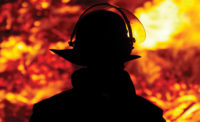What’s your definition of a job? Sure, it’s what you do every work day to make a living. For subscribers of ISHN, occupational safety is either your full-time or part-time job. But safety is also a “job” for everyone in your organization, from the CEO or plant manager on down to each and every front line worker. Safety is also a “job” for all temp workers, independent contractors and part-timers – “giggers” — that you have working at your site, and it’s a “job” for outside contractors who come work on your site.
“Job” equals “responsibility.” There are many jobs, many responsibilities, that we don’t get paid for. Parents don’t get paid for raising kids. Church elders don’t get paid for making decisions for the congregation. My mom used to pick up and drop off MS patients in need of transportation; she of, course, didn’t get paid. But it was a responsibility. Little League managers, youth sports coaches of local (non-travel) teams are responsible for scheduling and directing practices, communicating to players and parents, maintaining the playing fields, and coaching the games. Hospital volunteers, volunteers of endless varieties, have responsibilities but receive no paycheck.
Safety is a responsibility. A well-run safety program or safety culture really isn’t possible unless top management takes on safety as a job, and maintenance and quality and production and shipping and HR and every other department are prepped to assume their particular responsibilities for safety.
Like all jobs, safety responsibilities can be rewarding, and they can be a hassle. Safety takes up time. You go to meetings. You’re trained. You do behavior-based observations. You report hazardous conditions, incidents and close calls. You make suggestions. Managers and supervisors take time to discuss safety issues at meetings, track safety performance, and regularly walk the floor conducting audits and asking, “Where are the hazards? Where is the next accident going to happen, and why?”
Many workers have the responsibility to wear personal protective clothing (PPE). The gear can be cumbersome and inconvenient. It needs to be regularly inspected, maintained, and replaced when necessary. Your people are also responsible for following safety procedures. When working at heights, in confined spaces, around machinery and toxic exposures, there are rules and best practices that must be followed to avoid injuries.
Regulatory compliance is a job. Not just for the full-time safety staff or whoever has the facility’s primary safety responsibility, but everyone from the top exec on down must buy into complying with regulatory requirements.
Bailing on safety
Or not. In the famous words of country singer Johnny Paycheck, any number of managers, supervisors, and front line employees will look at safety and say, “Take this job and shove it.” Ever since the first safety manager was hired eons ago, many employees at all levels of an organization have said, “Safety’s not my job; it’s the safety guy’s job. That’s what he (or she) is here for. That’s what they get paid for. I don’t get paid for ‘doing safety;’ leave me out of it.”
With this attitude – “Safety ain’t my job” – you get compliance violations, rules broken, short cuts and risks taken, the potentially risky behavior of others ignored, PPE not used, and top managers who don’t communicate and model a value for safety. They don’t educate themselves about safety, don’t invest dollars in safety, don’t care about safety performance, shirk responsibility for their own safe behaviors, step away from any safety leadership role, and find many other things to do rather than fix hazards, exposures, error traps, and set up safety management systems.
Rolling with safety
Then again, many folks have no trouble taking on safety as a non-paying job. They go to all the meetings, speak up, suggest safety solutions, volunteer for committees, abide by the rules, get the training; heck, they become trainers, mentors, coaches themselves. Where would we be without these safety champs? Without managers, supers, and employees who take on the responsibilities, invest the time, report the problems, and don’t pass the buck to the safety department.
A downside of most any job is burnout. And that holds true for safety. That’s why you rotate safety committee members and volunteers for different activities. Safety champs put much time and energy and passion into their work, and over time some will burn out and need relief.
Feeling disconnected
Polls today show that the majority of employees are not “engaged” in their work. Maybe they feel ripped off, exploited, short-changed, shown no loyalty. Maybe they are at risk of being laid off or outsourced. They only do what they must to collect the paycheck they need. A “job” is nothing but a source of income. Any other responsibilities are off the table.
This is the challenge: safety is a non-paying job for almost everyone. Like all jobs, some people find rewards in it. Others find it a pain, a hassle, a bore; something to be avoided. To get buy-in, involvement, participation, that buzzword “engagement,” it helps to shoot straight. As in, “Yes, I’m asking you to take on a job, a responsibility, for safety.” In some companies, employees don’t have a choice. If you don’t take on the safety job, go look for work somewhere else. But that’s not the way it is most of the time. Somebody takes a risk; managers and supers and coworkers look the other way. Call it laissez-faire, take it or leave it safety. Or firms will try to dress up safety as something fun, a contest, a competition, a game. They dance around the hard fact that safety is a time-consuming, rule-abiding, at times inconvenient and unnatural (wear a respirator or fall harness for hours?) job.
Honesty is the best policy, as they say. Tell it like it is – the job, the responsibility of safety can be time-consuming and sometimes inconvenient -- also necessary and rewarding. Honesty builds trust, and you won’t get far trying to engage people in safety without them trusting you.




